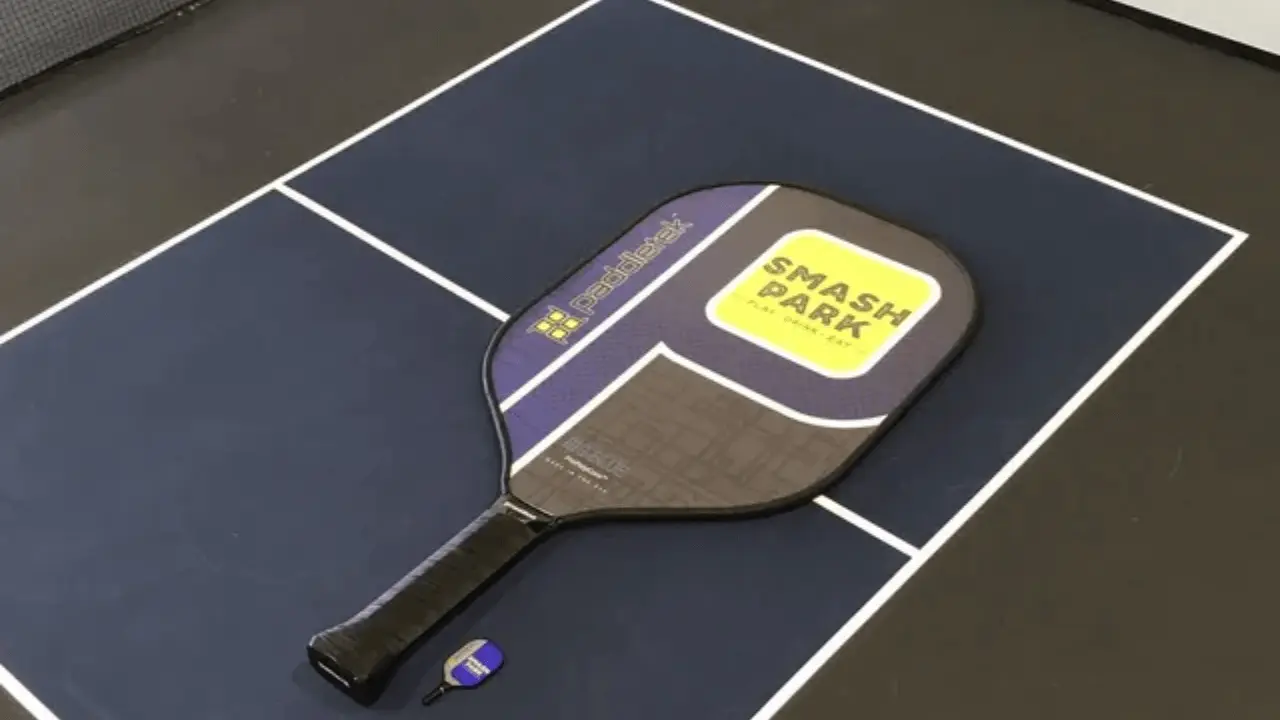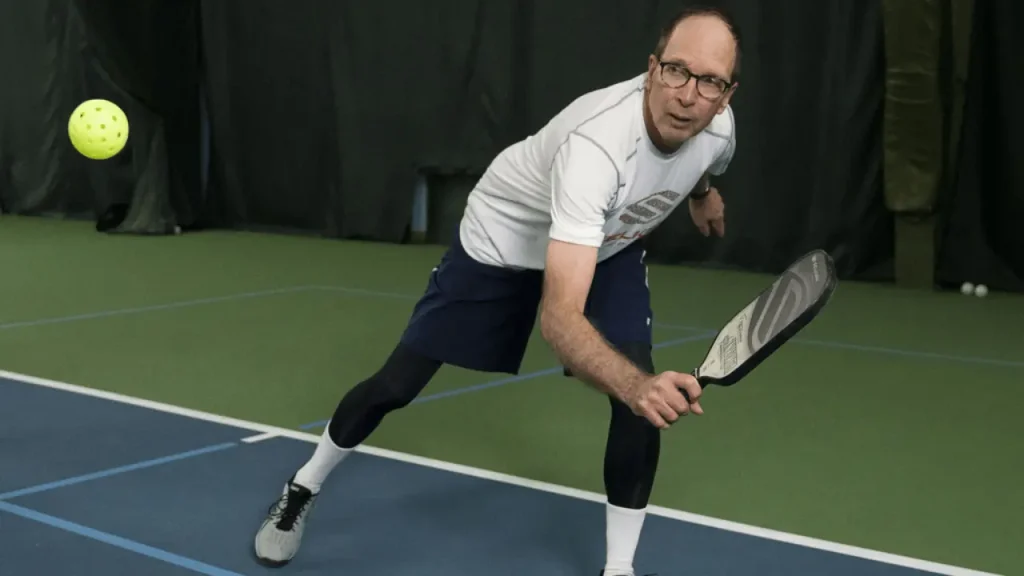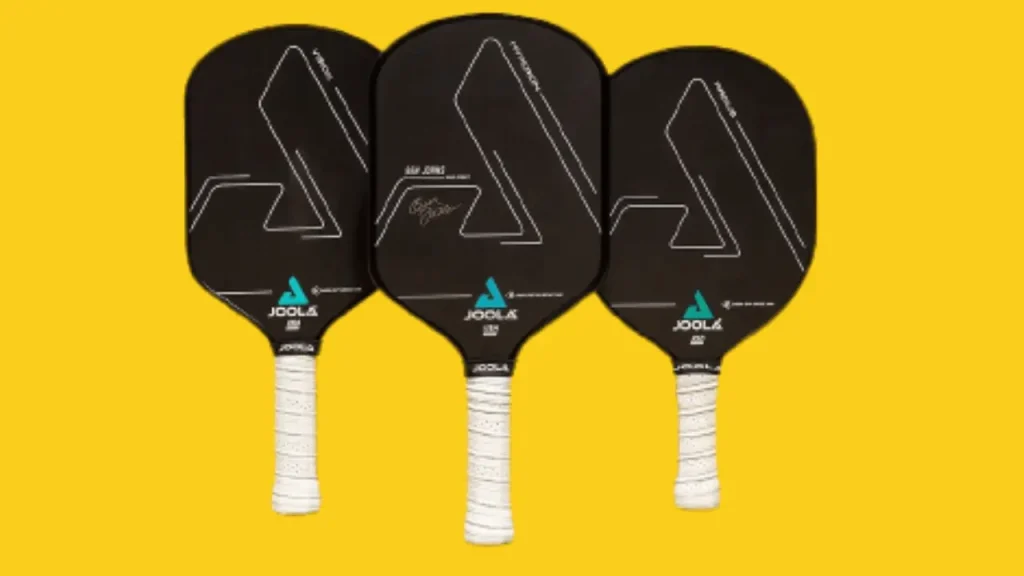Pickleball Paddle With Holes- Make Your Choice Better in 2024

Do you know about pickleball paddle with holes? Of course, most of the people did not know about it. Every sport brings new things with time.
With the wide variety of racquet and paddle sports available today, it’s understandable to feel confused about which equipment is needed for each sport. Pickleball is a unique and fastest-growing sport that gathers elements of badminton, tennis, and table tennis.
However, we’ll focus on a specific aspect: whether pickleball paddles have holes. You may have come across paddles that resemble pickleball paddles, but you’ll notice that pickleball paddles have a completely solid surface. Unlike games like paddle tennis, the surface of pickleball paddles is smooth. Furthermore, pickleball paddles are crafted with a graphite, composite, or wood core.
This might pique your curiosity if you’ve observed paddle tennis and wondered whether the paddles used in that sport are also used in pickleball. Your intuition isn’t entirely off, as both sports share similar designs and are made from similar materials.
However, let’s discuss deeper into the nature of pickleball and its paddles to understand the differences more thoroughly. So, keep reading to find out!
Pros
*Enhanced control and shot accuracy
*The larger sweet spot for better ball contact
*Reduced vibration for improved comfort
*Quieter play for noise-sensitive environments
*Spin generation for enhanced shot variety
*Lightweight design for maneuverability
*Durable construction for longevity
Cons
*Personal preference may vary
*Some players may prefer solid-core paddles
*Lighter weight may result in less power
*Compliance with pickleball rules and regulations
The Purpose of Using Pickleball Paddle With Holes
Pickleball players choose paddles with holes because of the distinct benefits they provide. These are key reasons why people prefer playing with pickleball paddle with holes.
- Improved Control: The holes in the paddle’s core contribute to better control over shots. They allow players to maneuver the paddle with precision, resulting in enhanced accuracy and shot placement.
- Larger Sweet Spot: Holes increase the size of the paddle’s sweet spot—the optimal area for making solid contact with the ball. This expands the margin for error, making it easier to hit the ball cleanly and consistently.
- Reduced Vibrations: The presence of holes helps dampen vibrations caused by ball impact. This minimizes strain on the player’s arm and wrist, providing a more comfortable and enjoyable playing experience.
- Quieter Gameplay: Holes in the paddle’s surface reduce the sound produced during play, making it suitable for noise-sensitive environments or communities where quieter gameplay is preferred.
- Lightweight and Maneuverable: Paddles with holes are often lighter in weight, enhancing player maneuverability and agility on the court. This allows for quick reactions and better handling of shots.
- Spin Generation: The hole patterns on the paddle’s surface facilitate spin generation. Players can put more spin on the ball, adding variety and strategic advantages to their shots.

The presence of holes in pickleball paddles offers benefits such as improved control, a larger sweet spot, reduced vibrations, quieter play, enhanced maneuverability, and spin generation.
These advantages make paddles with holes a popular choice among players, contributing to an enjoyable and competitive pickleball experience.
The Complete and Step-by-Step Breakdown Of Pickleball Paddle With Holes
Let’s take a closer look at the differences between pickleball paddles and those used in other sports. In tennis, racquets have a solid frame with tightly stretched strings that crisscross and overlap. However, pickleball paddles have distinct structures and materials.
They are also different from platform or paddle tennis, where the paddle surface can be textured to generate more spin. In pickleball, the face of the paddle is entirely smooth, lacking any textured patterns. Unlike some other racquet or paddle sports, there are no regulations or restrictions on the color of the paddle in pickleball.
The materials used in pickleball paddles also differ somewhat from other sports. They typically have a honeycomb interior and a face made of graphite or composite materials, such as carbon fiber or fiberglass.

Another notable distinction is the overall shape of the pickleball paddle, which is specifically designed for the sport. Initially made of wood, pickleball paddles are now constructed from materials like aluminum and graphite. The paddles of pickleball are smaller compared to tennis racquets but these paddles are larger than table tennis paddles.
Confusion may arise between pickleball paddles and paddle tennis paddles due to their similarities. The shape of a pickleball paddle can be likened to a scaled-up and flattened version of a table tennis paddle, providing a larger surface area for gameplay. In comparison, platform paddles have rounder edges and holes to reduce wind resistance. Additionally, pickleball paddles have size restrictions, with a maximum length of 17 inches (43 centimeters).
What Type of Pickleball Paddles Are Best For You?
A pickleball paddle with holes sits comfortably in size between that a table tennis paddle and a tennis racquet. There is a range of core materials that the paddles are made from, which we shall get to now. The main elements are typically wood, fiberglass (or composite), and graphite. The material used will be a variable for pricing and performance.
- Wooden paddles are cheaper and more traditional but heavier. Wooden paddles are not ideal for beginners or individuals with injuries. They are durable and have a nostalgic charm. Consider personal preference and try different types before deciding.
- Composite paddles or fiberglass ones are a nice mid-ground between the cheap and yet rather bulky wooden ones; however, you can typically pick them up for far less than a graphite paddle. Their cores are usually polymer or aluminum, and their faces are formed from fiberglass or carbon fiber.
- Graphite paddles will usually fetch the highest price out of the three; however, they offer greater ease of use than the other two. The only downside here is that unlike, especially the wooden types, there is less weight and, resultantly, drive behind your shots.
What Type Of Balls Are Used In Pickleball?
Pickleball uses a plastic ball with holes, similar to a Wiffle ball, but they are different. These balls are lightweight but still fly straight, even in a slight breeze, because of the holes in them. If you’re new to pickleball, you’ll learn that there are separate balls for indoor and outdoor play.
Outdoor balls have more holes and are harder compared to indoor balls. Both types of balls need to bounce, like in tennis or table tennis, which is why they are made of tough and durable plastic material. Although the plastic used for the balls is designed to withstand a lot of use, over time, outdoor balls can crack and indoor balls may become softer.
When this happens, the balls should be replaced with new ones. How long the balls last depends on the frequency of play and the intensity of hits. Some people find that their balls last a long time, while others need to use new balls almost every other game. All these types of balls can be used as pickleball paddle with holes to enjoy this fastest-growing sport.
Pickleball Paddle With Holes and Its Expected Lifespan
Wooden paddles may not be commonly used by professional or experienced players, but they offer exceptional durability and a longer lifespan compared to other materials. They are made from a sturdy material that can withstand extensive use.
If you’re looking for a pickleball paddle with holes that provide the best value for your investment, wooden paddles are a great choice.
On the other hand, high-end composite and graphite paddles, favored by professional players, typically last around one year before needing replacement. However, if you play recreationally and infrequently, their lifespan can be extended.

The longevity of a paddle depends on how frequently it is used and how well it is cared for. Proper maintenance is crucial. Avoid hitting the paddle against surfaces other than the ball, clean off sweat and residue after playing, and store it in a cool and dry place.
By taking good care of your paddle and following these guidelines, you can maximize its lifespan, regardless of the material it is made from.
Conclusion
So as you can see, there is a distinction between pickleball paddles and those used in other paddle and racquet sports. Unlike paddle tennis paddles, pickleball paddles do not have holes in them. They also have smoother surfaces compared to paddles in platform tennis.
We certainly hope you found this post insightful and that you can now step onto the court confidently knowing what type of racquet to use, such as a pickleball paddle with holes.
